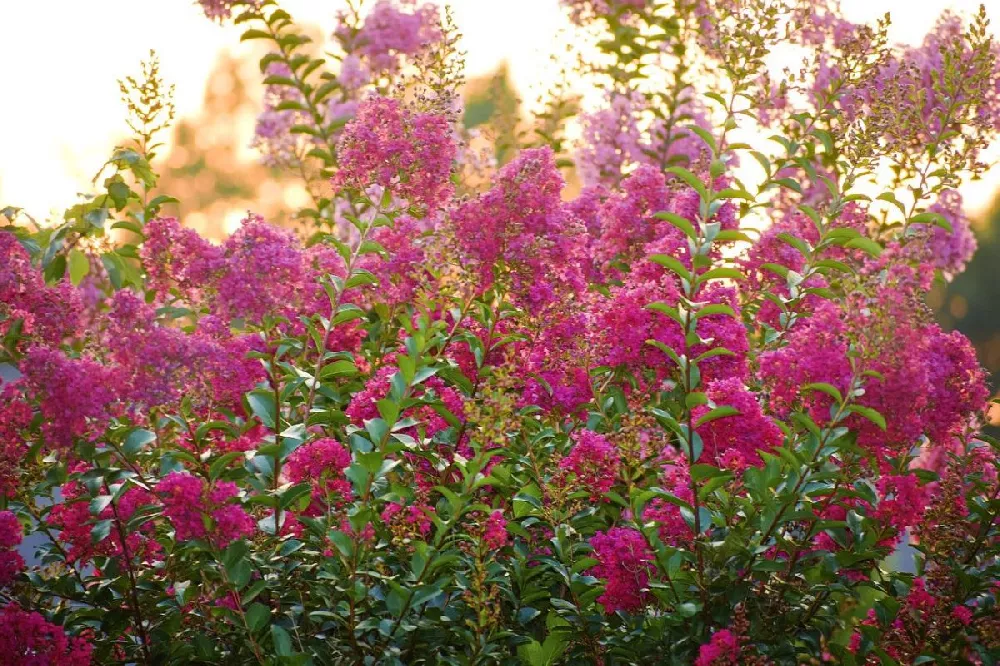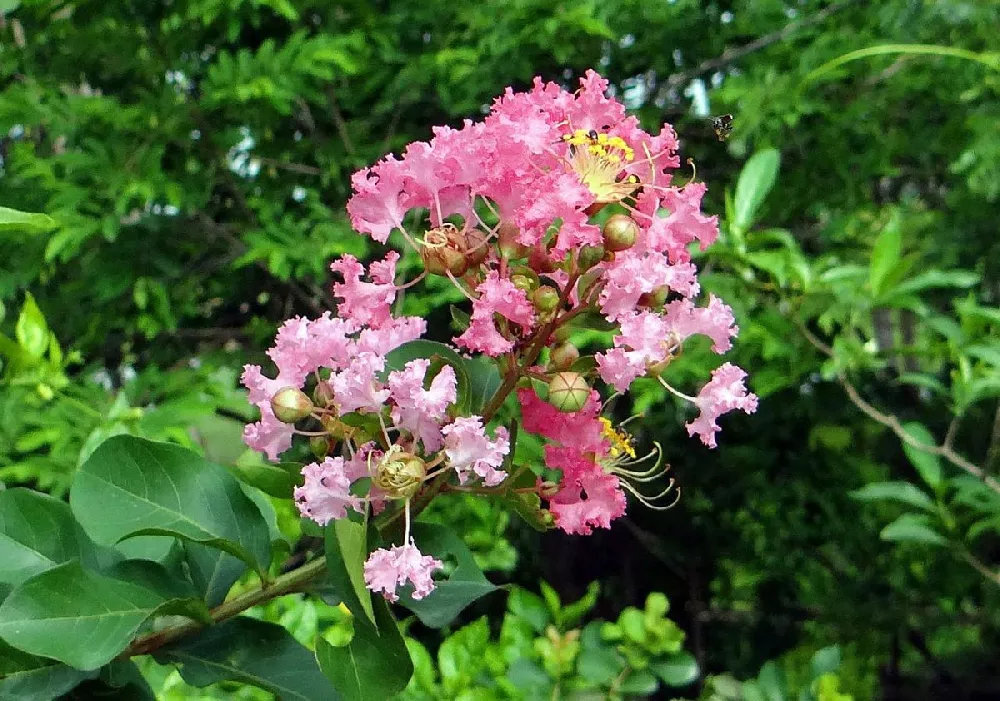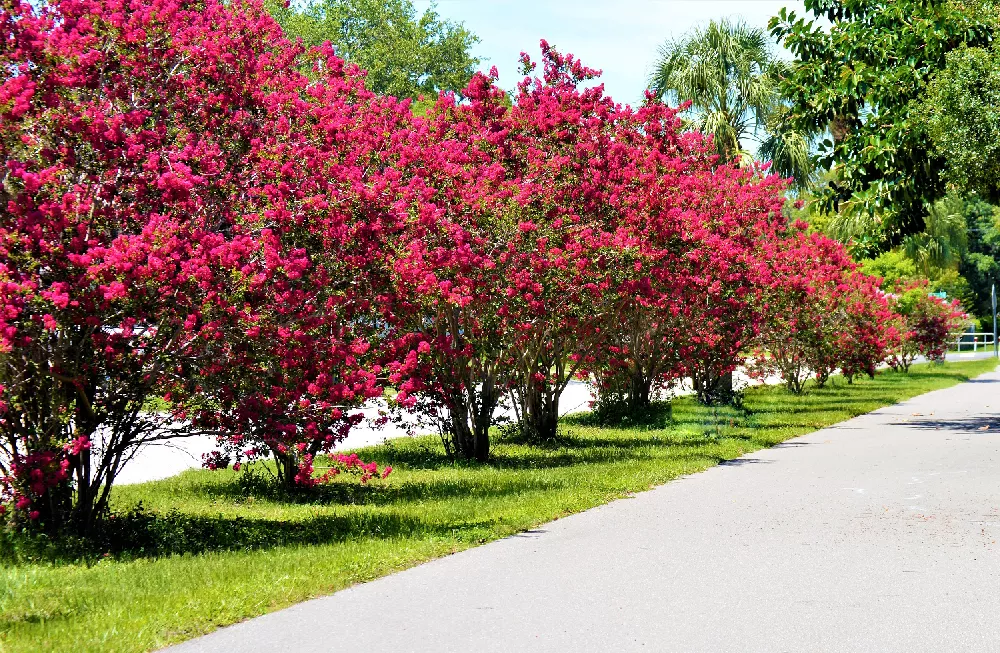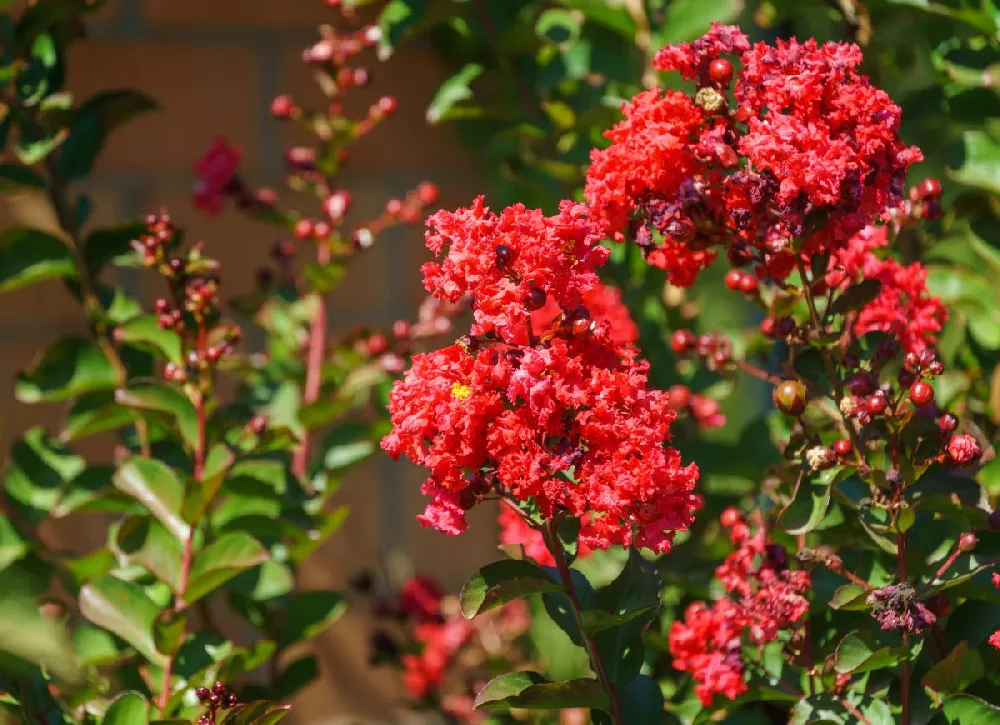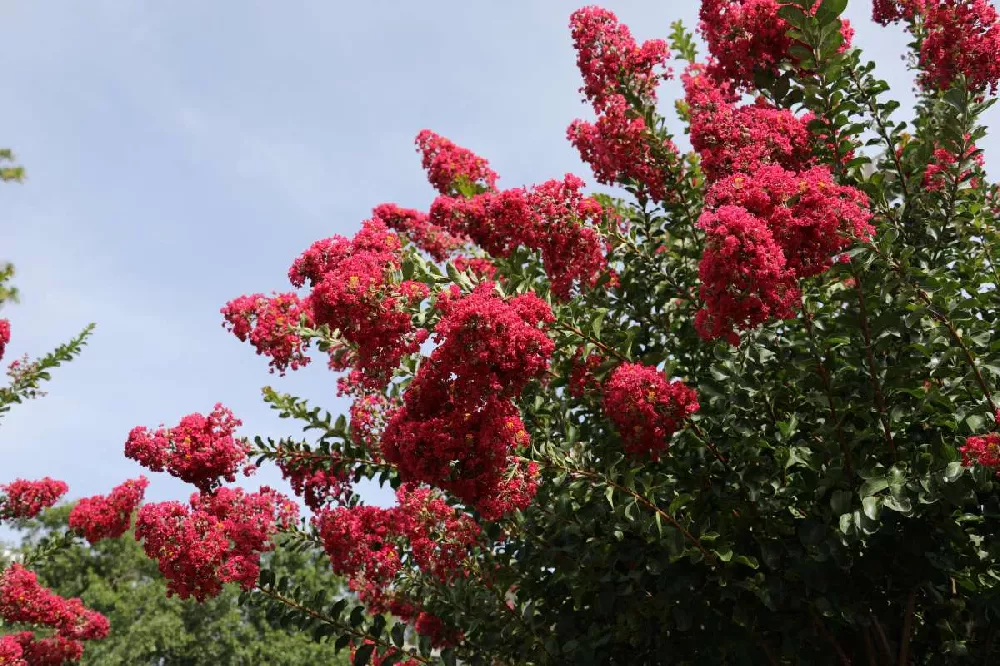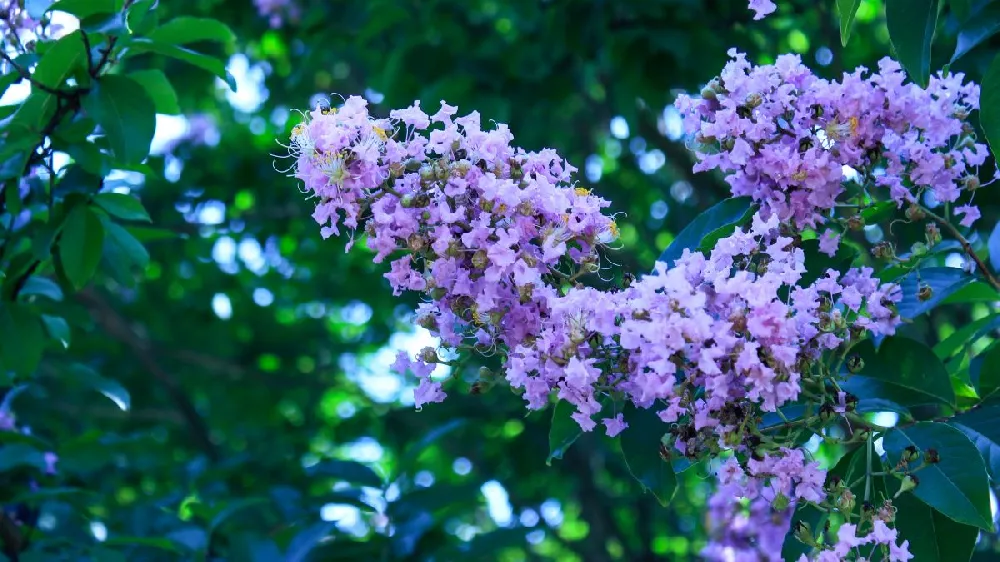- Home >
- Ornamental Plants >
- Twilight Crape Myrtle
Twilight Crape Myrtle for Sale - Buying & Growing Guide
The Twilight crape myrtle, also called Lagerstroemia indica 'Twilight,' has astounding blooms that are a deeper purple than the flowers of any other crape myrtle — and nearly any other flowering tree. These flowers, which persist from summer to the first frost, along with the moderate height and spread of this tree, make the Twilight crape myrtle ideal for residential landscapes. In addition, the Twilight crape myrtle has beautiful leaves that emerge in spring with a bronze shade before transitioning to deep green in summer and light yellow in fall.
- The Twilight crape myrtle has dark purple flowers.
- Its long-lasting blooms persist for several months.
- Its leaves change color throughout the season.
Enter your zip code to find nearby stores that may carry this plant.
Plant Care
Sunlight

Requires full sunlight — about six hours or more per day.
Watering
Observe soil moisture and give water when the first few inches of soil have become dry.
Fertilizing

Fertilize in early spring with a well-balanced all-purpose fertilizer blend.
Planting and Care
Planting instructions
Your Twilight crape myrtle will appreciate a growing location that sits in full sunlight and has moist, well-draining soil that is slightly acidic. The best way to plant this tree is to dig a planting hole that is deep enough that the tree’s root flare sits at or just above the soil’s surface. That hole should also be about twice as wide as the root ball or wider. After placing your tree in the hole and backfilling it with nutrient-rich soil, you should cover the planting area with a layer of organic mulch, which will help maintain soil moisture.
Watering and nutrients
After you plant your Twilight crape myrtle, you should water it often enough to maintain consistent soil moisture, which will encourage the root system to establish itself. Once this tree is established, you should monitor the soil moisture and water deeply when you notice the first 2 to 3 inches of soil have become dry. The best way to feed this plant is to apply a fertilizer that has equal amounts of nitrogen, phosphorus, and potassium once per year in spring.
Pollination
Like all crape myrtle trees, the Twilight crape myrtle is a self-pollinating plant, meaning that you need only one tree to allow for pollination and fruit development. Pollination typically occurs easily — the blooms of a Twilight crape myrtle are numerous and filled with nectar. That nectar serves as a fantastic food source for insects like bees and butterflies. However, since gardeners almost exclusively use the Twilight crape myrtle for ornamental purposes, pollination is not a concern when caring for this plant.
Pruning
There are two primary times of year in which it is advisable to prune a Twilight crape myrtle. The first of those periods occurs in late winter, as the plant is preparing to exit its dormant phase and begin producing new growth. At that time, you should prune to remove dead, damaged, and diseased stems and branches. The second time to prune this plant is during the bloom period. Notice when blooms have faded, then remove them from their branches to encourage future blooms.
Pests, diseases, and animals
Like most crape myrtle varieties, the Twilight crape myrtle is not vulnerable to many pests and diseases. However, it remains possible for this plant to run into some complications. One of the most common diseases to befall a Twilight crape myrtle is powdery mildew, a fungal infection that usually arises when this plant grows where it is too shaded or too wet. Sooty mold is another infection that can occur when the same poor growing conditions are in place. Along with those diseases, common garden pests, including aphids, scale insects, and Japanese beetles, may infest this tree.
Achieving maximum results
More often than not, a Twilight crape myrtle will be an easy-to-care-for plant. Still, there are a few characteristics of this treeto keep in mind when planning your maintenance routine. For instance, the Twilight crape myrtle is a fast-growing tree, meaning that you should be prepared to keep up with regular pruning to maintain an attractive form. Also, avoiding wet soils and overwatering leads to good odds that this plant will live a healthy and disease-free life. In many cases, Twilight crape myrtles show a strong ability to survive drought as well.
FAQs
How large does a Twilight crape myrtle grow?
The Twilight crape myrtle is a medium-sized ornamental tree that grows to be about 20 to 25 feet tall at maturity, with a spread that is just over half that size. This moderate size makes the Twilight crape myrtle an excellent option for those who have a relatively small growing area. It also does not take too long for the Twilight crape myrtle to reach its final form, as its growth rate is quite fast.
How long does the Twilight crape myrtle bloom?
One of the main attracting features of the Twilight crape myrtle is its incredibly long bloom time. With the right care and growing conditions, a Twilight crape myrtle will bloom during June and hold its flowers until the first frost of the year. In many locations, this amounts to several months of continuous purple blooms. The long bloom time makes this plant stand out among other ornamental trees, most of which have significantly shorter bloom periods.
Can crape myrtles grow in partial shade?
It's possible for a crape myrtle to grow in partial shade, but there are a few risks if you choose such a growing location. Mainly, crape myrtles that receive less than six hours of light per day often have weaker overall forms. Crape myrtles in partial shade are also more vulnerable to diseases, especially those that result from excessive moisture.
Compare Similar Products
You can't add more Product Name - Product size to the cart.
OK
